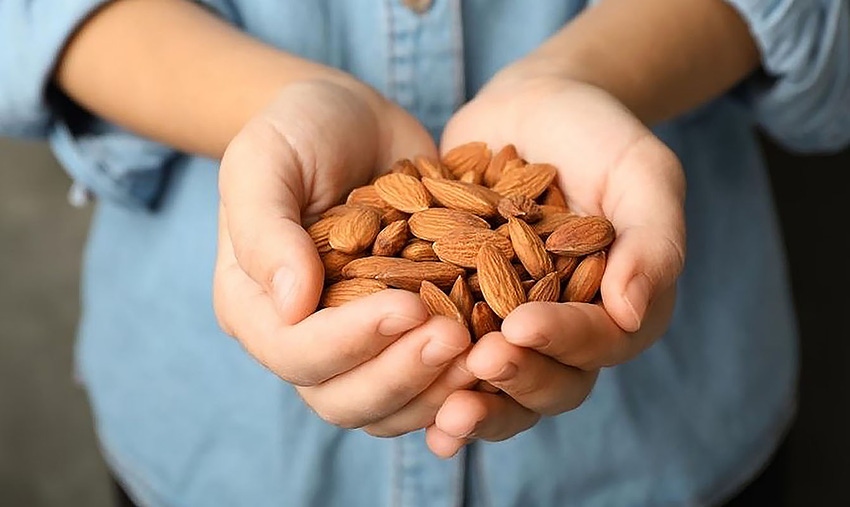
What do you do after the drupes are off the trees and hauled away for shelling and hulling? While heading for the beach (if that’s still allowed in COVID-19 country) sounds inviting, there’s still work to be done.
First off, you figure out what a drupe is. It’s a fruit—ranging from peaches and cherries to almonds, walnuts, and pecans—in which an outer fleshy part surrounds a shell or pit with a seed inside. In the case of tree nuts, we eat the seed inside the pit instead of the fruit itself.
And while we’re learning stuff, here’s another item—tree nut harvesting may be a seasonal thing, but postharvest processing represents a year-round activity. For sustainable and profitable nut production, proper tree nutrition using both soil and foliar application is called for because nut trees continue to work after harvest and they expect you to work, too.
According to a variety of experts, a postharvest management program is critical because yield potential for the next crop is determined by bud formation on this year’s fruiting spurs—and next year’s bloom and nut-set can only occur on buds already created.
In past years, the University of California Cooperative Extension’s Sacramento Valley area integrated pest management (IPM) and farm advisors have met to share knowledge about the latest harvest with a look toward next year. Due to the coronavirus and some personnel shifting, that meeting will not be held this year.
“With just three general UCCE orchard advisors left in the Sacramento Valley and plantings increasing, simply keeping our regular programs going is an increasing challenge,” said advisor Franz Niederholzer, who works with both almonds and pistachios.
November to January
But some of those same farm experts, like Niederholzer, Katherine Jarvis-Shean, and Luke Milliron, are still around and willing to discuss things like water, weed, and pest management now that trees have been shaken empty.
“Sample dormant almond spurs over the November to January timeframe for scale, mite eggs, and scab,” said Jarvis-Shean, who represents Sacramento, Solano, and Yolo counties. “A total of 100 spurs from 30-50 trees should be randomly selected,” she advises.
“If your soil fertility management plan calls for it, apply banded potassium (granular potassium chloride or potassium sulfate) in late November after leaf-drop progresses,” she said. “Every thousand pounds of almond kernels harvested pull out up to 80 pounds of potassium. If you plan early pruning, avoid doing so ahead of any rain forecasts. Disease spores are spread during rain events and recently-pruned trees run the risk of infection.”
Milliron, orchards advisor in Butte, Glenn and Tehama counties, is concerned about recent reports of elevated mold levels in recently harvested walnuts. These reports have increased over the last five years, he said.
Pathology samples have been turned over to UC Davis plant pathologists at Kearney Agricultural Research and Extension Center and the California Walnut Board has funded an investigation into walnut mold and conditions that could compromise the integrity of the hull allowing entry of mold fungi.
Previous walnut management considerations for the early fall months have recommended against adding any further nitrogen in late season. Deadwood and blighted branches should be immediately removed to take away any possible Botryosphaeria while harvest samples should be collected to distinguish between possible damage from either codling moth or navel orangeworm.
Niederholzer, who focuses in on Colusa/Sutter/Yuba Counties, and is currently in the middle of this year’s harvesting, said, simply: “The key to a healthy post-harvest almond orchard in order to ensure good production next year is proper irrigation. The first thing growers should check off their postharvest ‘to do’ list is get the water back on ASAP after pickup. There are plenty of other things almond growers need to do after harvest, but that one tops the list.”
For more news on tree nuts as reported by growers and farm advisors, subscribe to the Tree Nut Farm Press e-newsletter.
Read more about:
AlmondsAbout the Author(s)
You May Also Like




